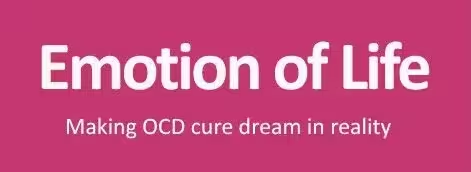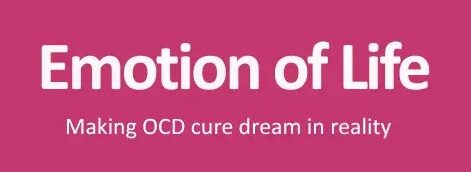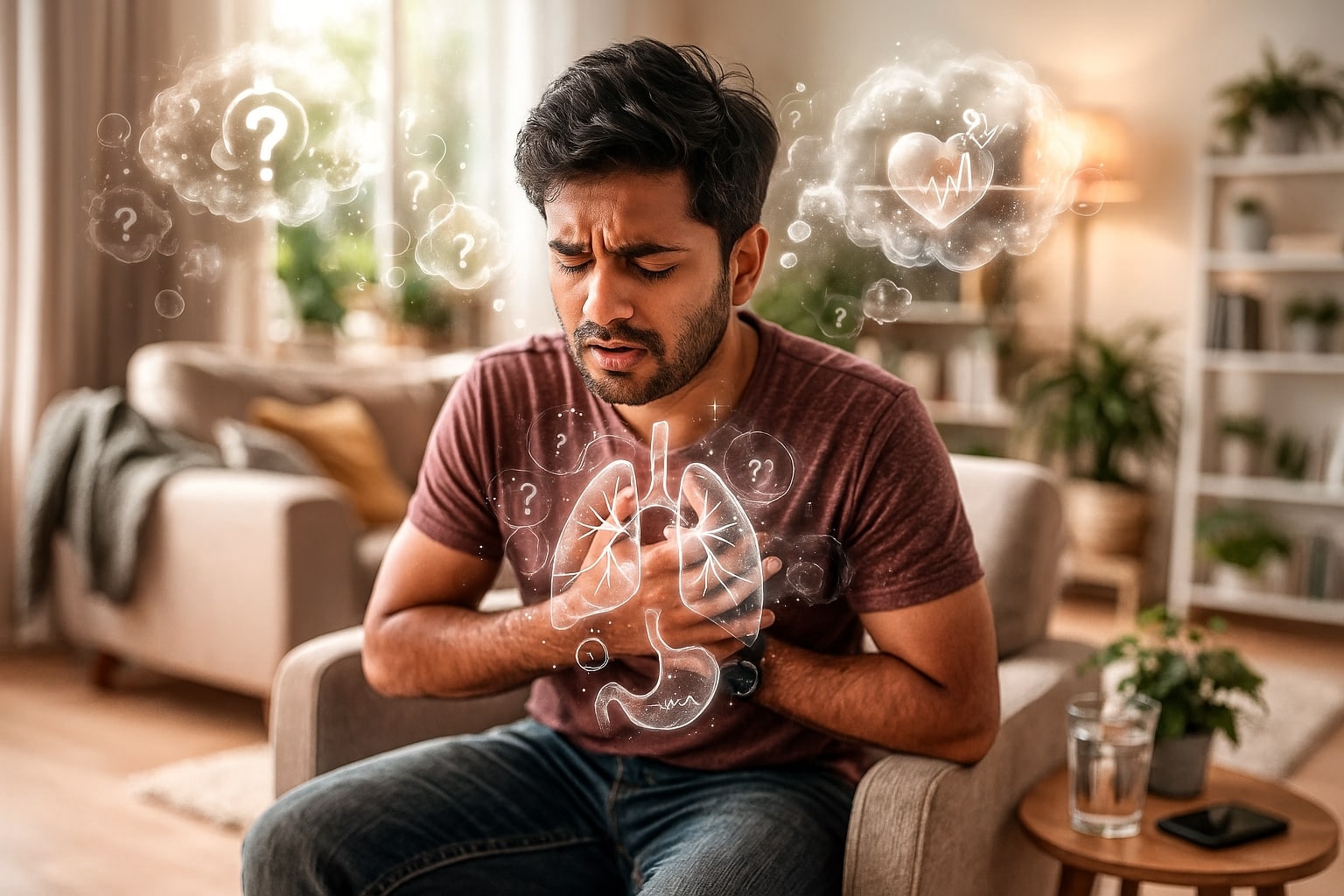Sensorimotor OCD is a troubling subtype of obsessive-compulsive disorder where the individual primarily fears their own body. Those affected by Sensorimotor OCD are plagued by persistent, intrusive thoughts concerning bodily sensations, health concerns, or imagined physical defects. These worries lead to checking behaviors, constant monitoring, or seeking reassurance to achieve a sense of safety. Unlike typical body awareness or reasonable health concerns, these thoughts are intrusive, time-consuming, and conflict with the individual’s self-identity. Terms like Sensorimotor OCD, body-focused obsessions, and health anxiety summarize the core experience of the condition, which sees the mind fixate on normal sensations such as a twitch or change in skin texture and then predict catastrophic scenarios that are hard to dismiss.
Somatic OCD individuals often engage in compulsive behaviors such as frequently checking their body, visiting doctors, researching symptoms online, or conducting rituals like measuring body parts or mirror checking to validate or refute their feared illnesses. In contrast to illness anxiety disorder, which primarily concerns the fear of having an illness, Sensorimotor OCD includes compulsions such as mental rituals, counting, and reassurance seeking that aim to alleviate feelings of uncertainty about bodily integrity. While these behaviors may provide temporary relief, they ultimately strengthen the obsession, increasing sensitivity to normal bodily fluctuations and creating an unbearable experience. Recognizing that these reactions stem from an anxiety-based disorder rather than an actual medical condition is crucial for recovery.
Impact of Sensorimotor OCD
Sensorimotor OCD can lead to significant isolation. Affected individuals often feel trapped within their own bodies, believing every sensation could lead to a disaster.
- This can strain relationships, as loved ones may find themselves caught in cycles of reassurance or may grow weary from frequent medical visits.
- Work and daily life may suffer as time is consumed by compulsive checking and research.
- The physical toll can also be significant; persistent skin irritation from checking, disturbed sleep due to anxiety, and heightened stress responses can intensify otherwise benign sensations.
- Emotionally straining the individual and causing chronic stress that can erode confidence.
Understanding Sensorimotor OCD involves recognizing how typical bodily sensations transform into the center of obsessive fear. Although sensations such as changes in heart rate or muscle tension are normal, individuals with this OCD experience intrusive thoughts like the fear that a chest pain indicates a heart attack that provoke intense anxiety. This leads them to engage in checking behaviors, like observing their body in a mirror or researching symptoms extensively online. Over time, a strong association forms in the individual: sensation → catastrophic thought → compulsion → temporary relief. This cycle is perpetuated by avoidance behaviors and the need for reassurance.
Symptoms of Sensorimotor OCD
Key symptoms include,
- Constant fixation on specific sensations or perceived bodily flaws, excessive self-inspection, intensive health-related research, and seeking reassurance from healthcare providers and loved ones.
- Sufferers often experience high levels of anxiety, shame regarding their preoccupations, frustration, and at times, depression.
- Sleep is often disrupted, as nighttime can amplify bodily awareness and hinder concentration at work or school.
Causes of OCD
The causes of Sensorimotor OCD are multifaceted, encompassing psychological, social and environmental factors.
Psychological factors
- Psychological factors: characteristics such as a strong sense of responsibility, discomfort with uncertainty, perfectionism, and heightened awareness of bodily signals can predispose someone to develop Sensorimotor OCD.
Social and Environmental influences
- Social and Environmental influences: such as a family history of health-related anxiety, early experiences that shame or exaggerate bodily issues, or traumatic health events can also draw attention to physical sensations. Common triggers may include new bodily feelings (like a twinge or ache), significant life stress, illness in a family member, or information about health issues; cognitive biases like selective attention to threats help maintain the cycle.
Treatment of Sensorimotor OCD
Effective treatment for Sensorimotor OCD should be evidence-based and individualized, focusing on psychotherapy, compassionate strategies for managing bodily distress, wellness coaching aimed at holistic improvement, adjustment of personality dynamics, practical coping skills, and efforts to enhance emotional and mental health.
Cognitive Behavioral Therapy (CBT)
Cognitive Behavioral Therapy (CBT): can assist individuals in identifying and reframing catastrophic thoughts related to bodily sensations. This involves evaluating evidence for and against distressing interpretations (e.g., “Is this pulse change likely to indicate a severe health issue considering my age and health history?”) and exploring favorable, less alarming explanations. Through cognitive restructuring, the urgency for checking can diminish, and catastrophic thinking can be reduced.
Exposure and Response Prevention (ERP)
Exposure and Response Prevention (ERP): serves as a central behavioral technique for Sensorimotor OCD. ERP involves deliberately facing feared body-related triggers while refraining from typical compulsive responses. For instance, someone anxious about skin cancer might touch a mole and avoid repeatedly checking the mirror or taking photos of it; or a person anxious about heart palpitations may intentionally monitor their heart rate for a short time without checking again. Initial exposures are carefully supported and graduated to prevent overwhelming feelings; the aim is to demonstrate that anxiety naturally fluctuates and can subside without engaging in compulsive behaviors. Over time, habituation lessens the need for checking and alleviates intense focus on bodily sensations.
Acceptance and Commitment Therapy (ACT)
Acceptance and Commitment Therapy (ACT): complements CBT and ERP by encouraging acceptance of bodily experiences and the pursuit of values-based actions. ACT teaches individuals to treat sensations and intrusive health worries as temporary mental events rather than indicators of catastrophe. It employs cognitive defusion techniques to help detach thoughts and sensations from their intense emotional grip. ACT also helps clarify personal values such as relationships or career passions, enabling clients to lead fulfilling lives despite lingering discomfort. For someone with Sensorimotor OCD, ACT may involve committing to attend family gatherings with an emphasis on connection, rather than fixating on every minor bodily feeling.
Wellness Coaching
Wellness Coaching: is another vital component that frames recovery as an overall enhancement of life rather than just the elimination of symptoms. Coaches advocate for a regular sleep routine, balanced nutrition, moderate exercise that fosters trust in the body, and stress-relief practices like mindfulness and breathing exercises. A wellness coach can help establish daily habits that lower baseline physiological arousal, making bodily sensations less alarming. They also create practical relapse prevention strategies and integrate exposure exercises into everyday life, ensuring recovery becomes sustainable and holistic rather than isolated to clinical settings.
Personality dynamics course-correction
Personality dynamics course-correction: that contribute to Sensorimotor OCD such as perfectionism and excessive responsibility can be valuable. Therapeutic work examines how these traits developed, through parental messages about health, cultural pressures for control, or personal medical traumas and encourages exploration of new perspectives. For example, an individual who mistakenly correlates health vigilance with moral obligation may learn to appreciate the balance of self-care and acceptance of natural bodily variations. Fostering self-compassion while reducing self-criticism can help alleviate the emotional intensity that drives compulsive behaviors.
Developing Healthy Coping Mechanisms
Developing Healthy Coping Mechanisms: is crucial, as it replaces checking rituals with healthier ways to soothe the nervous system. Techniques such as grounding exercises, paced breathing, and progressive muscle relaxation can help lessen attention to bodily sensations. Behavioral strategies might include predetermined “body check windows” that are time-limited; journaling worries instead of compulsively searching; and enlisting trusted partners to help resist the urge for reassurance.
Focusing on Emotional and Mental Health
Focusing on Emotional and Mental Health: is essential and should not be an afterthought. Emotional work can help process the guilt and fear accompanying Sensorimotor OCD. Therapy may involve trauma-informed methods if past medical incidents have exacerbated hyperawareness. Family therapy can support shifting from enabling reassurance to encouraging engagement in exposure tasks. Restoring healthy sleep, reconnecting socially, and pursuing enjoyable activities can help reclaim life outside of symptoms. As emotional resilience builds, the mind becomes less likely to misinterpret normal bodily changes as threats, allowing for a more peaceful experience of the body.
Self-help strategies to manage Sensorimotor OCD
Self-help strategies can bolster formal therapy: impose strict limits on checking behaviors, maintain a “worry log” for externalizing uncertainties, engage in daily mindfulness practices, and gradually reintroduce avoided situations. Importantly, self-help measures are most effective when combined with professionally guided ERP for meaningful, lasting change.
SUCCESS STORY – I
Varun, a 29-year-old software engineer, had been struggling with an overwhelming awareness of his breathing. What started as occasional discomfort grew into a daily obsession. He feared he would never be able to breathe “naturally” again. This constant focus left him exhausted, anxious, and unable to concentrate at work. Varun also began avoiding social situations, worried that people would notice his irregular breathing patterns.
His turning point came when he sought help from Mr. Shyam Gupta at Emotion of Life. In therapy, Varun began to challenge his catastrophic thoughts like, “I will be stuck with this forever.” Through ERP exercises, he learned to deliberately focus on his breathing without resorting to avoidance, slowly reducing his fear. ACT sessions taught him to accept his sensations without letting them control his actions. Alongside therapy, he was guided in wellness coaching, introducing yoga, better sleep hygiene, and journaling as daily practices.
Over six months, Varun noticed significant improvement.
- His emotional health strengthened, and he learned healthier coping mechanisms.
- Instead of panicking when he became aware of his breathing, he reminded himself it was just a normal sensation.
Today, Varun reports living a balanced life, performing well in his job, and reconnecting socially. His success shows that with structured therapy and lifestyle upgrades, recovery from Sensorimotor OCD is possible.
SUCCESS STORY – II
Kia, a 25-year-old postgraduate student, developed Sensorimotor OCD during her final year of college. She became hyper-aware of her blinking, convinced that she would never stop noticing it. This fear spiraled into compulsions where she checked her blinking in the mirror and tried to “control” it. The constant distress made it hard for her to focus on studies, and she began doubting her ability to complete her degree.
When Kia approached Emotion of Life, she was introduced to a comprehensive treatment plan. CBT helped her reframe her intrusive beliefs and see her thoughts as just mental events rather than threats. ERP gradually exposed her to situations where her blinking was noticeable like attending lectures without letting her perform compulsions. Through ACT, Kia embraced mindfulness and allowed sensations to be present while still engaging in her academic and personal goals. She also participated in wellness coaching, focusing on upgrading her lifestyle with meditation, exercise, and building emotional resilience. Kia worked with Mr. Shyam Gupta on personality dynamics course correction, helping her shift from perfectionistic tendencies to more flexible thinking. Over time, she developed healthy coping mechanisms, like grounding techniques and deep breathing when anxiety flared up.
Kia’s recovery was steady but empowering. She completed her degree with confidence and even began mentoring peers who struggled with anxiety. Today, Kia describes her emotional health as “stable and strong,” acknowledging that while intrusive thoughts may still pop up, they no longer control her life.
FAQ
- 1. What is Sensorimotor OCD and how is it different from health anxiety?
Sensorimotor OCD is a subtype of obsessive-compulsive disorder where individuals become hyper-focused on normal bodily sensations like breathing, blinking, or heartbeat. Unlike health anxiety, where the worry is about having a medical illness, Sensorimotor OCD revolves around the fear that the awareness of these sensations will never go away and will interfere with life.
- 2. Can Sensorimotor OCD go away on its own without treatment?
While symptoms may fluctuate, Sensorimotor OCD rarely resolves completely without proper treatment. Structured therapies like CBT and ERP help in retraining the individual’s response to bodily sensations.
- Can this type OCD affect emotional health and relationships?
Yes. Constant preoccupation with bodily sensations can increase irritability, anxiety, and isolation, affecting relationships. Improving emotional health through therapy helps rebuild confidence and interpersonal connections.
- Is full recovery from Sensorimotor OCD possible?
With consistent treatment and lifestyle changes, many people achieve long-term recovery. Symptoms disappear completely allowing individuals to live a fulfilling and balanced life.
- Is medication necessary for treating Sensorimotor OCD?
Not always. Many individuals respond very well to therapy alone, especially CBT and ERP.
CONCLUSION
In conclusion, it can be distressing as it targets the most personal aspect of life, our bodies, but it is treatable. A compassionate, evidence-based approach that includes CBT, ERP, ACT, wellness coaching, addressing personality dynamics, establishing healthy coping strategies, and emotional healing provides a holistic pathway toward regaining control over one’s life. The goal of recovery isn’t to eliminate every physical sensation, but rather to transform the relationship with the body so that sensations can be acknowledged without catastrophic implications, and to live according to one’s values rather than through relentless checking. If somatic worries are constricting your world, seeking specialized guidance at Emotion of life can be a courageous and practical step toward finding comfort in your own body once again.


